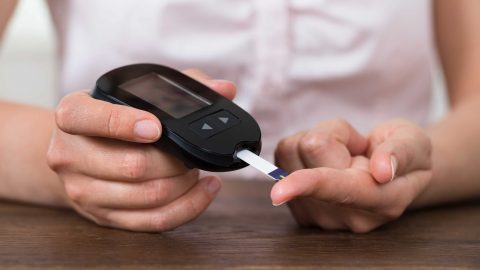The term insulin dependent diabetes refers to Type 1 diabetes mellitus, a chronic autoimmune condition where the pancreas produces little to no insulin. Insulin is essential for regulating blood sugar levels, and without it, glucose accumulates in the bloodstream, leading to serious health complications. In medical documentation and billing, this condition is classified under the ICD-10 code E10.
Understanding the Insulin Dependent Diabetes ICD-10 code and its related subcodes is crucial for healthcare professionals, coders, and even patients who want to know how their diagnosis is recorded. This guide explores everything you need to know about ICD-10 code E10, its subcategories, clinical implications, and best practices for accurate medical coding.
What Is Insulin Dependent Diabetes?

Definition and Overview
Insulin dependent diabetes, also known as Type 1 Diabetes Mellitus (T1DM), is a metabolic disorder where the immune system attacks and destroys insulin-producing beta cells in the pancreas. This autoimmune response leads to a complete or near-complete absence of insulin. Without insulin, glucose cannot enter cells to be used for energy, causing hyperglycemia (high blood sugar levels).
Type 1 diabetes typically appears in childhood or adolescence, but it can also occur in adults. It requires lifelong insulin therapy for survival, hence the name “insulin dependent.” Unlike Type 2 diabetes, which may be managed with diet, exercise, and oral medications, Type 1 patients must rely on external insulin to maintain normal blood glucose levels.
Causes and Risk Factors
The exact cause of insulin dependent diabetes is not fully understood. However, a combination of genetic predisposition and environmental triggers plays a significant role. Viral infections, family history, and certain autoimmune mechanisms are believed to contribute to the destruction of pancreatic cells.
Individuals with specific HLA (human leukocyte antigen) genotypes are more susceptible. In addition, early exposure to cow’s milk, vitamin D deficiency, or other immune system stressors have been studied as potential risk factors.
Common Symptoms and Diagnosis
The classic symptoms of Type 1 diabetes include frequent urination, excessive thirst, unexplained weight loss, blurred vision, fatigue, and increased hunger. In severe cases, patients may present with diabetic ketoacidosis (DKA) — a life-threatening condition characterized by high blood sugar, ketone buildup, and metabolic acidosis.
Diagnosis involves a combination of blood glucose tests, HbA1c levels, and autoantibody screening. Once confirmed, physicians assign an ICD-10 code to classify the condition for documentation, insurance, and epidemiological tracking.
Understanding ICD-10 and Its Importance
What Is ICD-10?
The International Classification of Diseases, 10th Revision (ICD-10), is a standardized system developed by the World Health Organization (WHO) to categorize diseases, symptoms, and medical procedures. It allows healthcare systems worldwide to communicate using consistent terminology for diagnoses and billing.
Each disease or condition is assigned a unique ICD-10 code, which provides detailed information about its nature, severity, and associated complications.
Why ICD-10 Codes Matter
ICD-10 codes are essential for:
- Medical billing and insurance claims: Insurers use these codes to determine coverage and reimbursement.
- Clinical research: Helps track disease prevalence and outcomes globally.
- Public health monitoring: Allows governments and organizations to identify health trends.
- Medical record accuracy: Ensures consistency in patient records and treatment documentation.
For diabetes, the ICD-10 codes differentiate between Type 1, Type 2, gestational, and secondary diabetes, along with their specific complications.
ICD-10 Code for Insulin Dependent Diabetes
Primary Code: E10
The base code for insulin dependent diabetes is E10 – Type 1 Diabetes Mellitus. This category includes all forms of autoimmune diabetes requiring insulin for treatment. The E10 code is further divided into subcodes (E10.0–E10.9) that specify complications or disease characteristics.
Using the correct subcode ensures precise clinical reporting and appropriate reimbursement.
Detailed Overview of Insulin Dependent Diabetes ICD-10 Subcodes
E10.0 – Type 1 Diabetes Mellitus with Coma
This code applies when a patient with Type 1 diabetes experiences a diabetic coma, often resulting from diabetic ketoacidosis (DKA) or severe hypoglycemia. Documentation should clearly indicate the cause and state of the coma.
Patients presenting with DKA may show symptoms such as deep, rapid breathing, nausea, vomiting, confusion, and fruity-smelling breath. Accurate coding under E10.0 ensures proper clinical and billing classification.
E10.1 – Type 1 Diabetes Mellitus with Ketoacidosis
This subcode is used when ketoacidosis occurs without coma. Ketoacidosis is a serious metabolic complication that develops when insulin levels are too low and the body breaks down fat for energy, producing ketones.
Symptoms include abdominal pain, vomiting, dehydration, and confusion. Early recognition and treatment with fluids, insulin, and electrolytes are essential. Coding E10.1 helps differentiate this condition from other metabolic imbalances.
E10.2 – Type 1 Diabetes Mellitus with Kidney Complications
This code covers renal disorders caused by long-term Type 1 diabetes, including diabetic nephropathy, chronic kidney disease (CKD), and renal failure.
When coding, it’s important to include both E10.2 and the specific kidney disease code (e.g., N18.3 for CKD Stage 3) for complete documentation. Kidney complications develop gradually, emphasizing the importance of glucose control and regular screening.
E10.3 – Type 1 Diabetes Mellitus with Eye Complications
E10.3 is assigned for ocular complications like diabetic retinopathy, macular edema, or cataracts linked to Type 1 diabetes. These issues result from damage to retinal blood vessels due to chronic hyperglycemia.
Early diagnosis and ophthalmic care can prevent vision loss. Healthcare providers often pair this code with specific ophthalmologic diagnoses (such as H36.0 for diabetic retinopathy).
E10.4 – Type 1 Diabetes Mellitus with Neurological Complications
This subcategory addresses neuropathy and other nerve-related conditions resulting from diabetes. Symptoms include numbness, tingling, burning sensations, or muscle weakness, typically in the extremities.
Proper management focuses on blood sugar control, pain management, and physical therapy. Coders use E10.4 when neurological complications are documented in the medical record.
E10.5 – Type 1 Diabetes Mellitus with Circulatory Complications
Circulatory complications include peripheral vascular disease, atherosclerosis, and heart disease associated with diabetes. These arise from long-term damage to blood vessels due to poor glucose control.
Coding under E10.5 ensures accurate tracking of cardiovascular impacts and helps healthcare providers emphasize lifestyle and medication interventions to prevent further progression.
E10.6 – Type 1 Diabetes Mellitus with Other Specified Complications
E10.6 applies to other defined complications that do not fall under kidney, eye, or neurological categories. Examples include skin infections, periodontal disease, or digestive issues linked to diabetes.
This code offers flexibility when a complication is clearly caused by diabetes but doesn’t fit established subcategories.
E10.8 – Type 1 Diabetes Mellitus with Unspecified Complications
When documentation confirms complications but lacks detail, E10.8 is used. This code indicates that the patient has one or more diabetes-related complications that are unspecified.
For compliance, healthcare providers are encouraged to describe complications more precisely to avoid the use of unspecified codes.
E10.9 – Type 1 Diabetes Mellitus Without Complications
E10.9 is assigned when a patient has Type 1 diabetes without any documented complications. It’s often used during initial diagnosis or routine follow-ups when blood sugar control is stable.
Although this code represents the least severe classification, patients still require lifelong insulin management, regular monitoring, and education on diet and exercise.
Differences Between Type 1 and Type 2 Diabetes ICD-10 Codes
While E10 applies to insulin dependent (Type 1) diabetes, E11 represents Type 2 Diabetes Mellitus. Type 2 diabetes is not primarily insulin dependent, though some patients may require insulin therapy over time.
| Feature | Type 1 (E10) | Type 2 (E11) |
|---|---|---|
| Insulin Dependency | Always | Sometimes |
| Onset | Usually childhood | Typically adulthood |
| Cause | Autoimmune destruction of beta cells | Insulin resistance |
| Body Weight | Often normal or underweight | Often overweight |
| Common Treatment | Insulin injections | Diet, exercise, oral meds, insulin if needed |
Understanding the distinction between these two codes is vital for accurate clinical and billing documentation.
Coding Guidelines for Insulin Dependent Diabetes ICD-10
1. Use the Most Specific Code Available
Coders should always use the most detailed subcode possible (e.g., E10.22 for kidney complications) rather than the general E10 code. This ensures accurate reporting and compliance with insurance requirements.
2. Document Related Conditions
If the patient has additional diagnoses such as hypertension or hyperlipidemia, these must be documented separately using corresponding ICD-10 codes.
3. Identify Complications Clearly
Detailed physician documentation is critical. If complications exist, specify their type and severity to justify the correct subcode. For example, “Type 1 diabetes with mild nonproliferative retinopathy” should be coded differently than “with macular edema.”
4. Avoid Using Unspecified Codes
Unspecified codes like E10.8 should only be used when details are unavailable. Clear medical notes allow coders to select precise subcodes.
Common Documentation Errors and How to Avoid Them
- Confusing Type 1 and Type 2 diabetes: Always confirm whether the patient is insulin dependent.
- Omitting complication details: Missing or vague documentation leads to incomplete coding.
- Failing to code secondary conditions: Coexisting diseases should be recorded alongside E10.
- Using outdated terminology: Avoid obsolete phrases such as “juvenile diabetes” — use “Type 1 Diabetes Mellitus.”
Healthcare facilities can minimize these errors through education, audits, and consistent record-keeping practices.
Clinical Management and ICD-10 Linkage
ICD-10 coding plays a significant role in managing diabetes care. By identifying the correct code, healthcare providers can track treatment outcomes and evaluate the effectiveness of interventions.
For example, a patient coded under E10.22 (Type 1 with kidney complications) may require nephrology referral, specific lab monitoring, and treatment adjustments. The ICD-10 framework supports this clinical pathway by associating diagnosis with care plans.
Why Accurate Coding Benefits Patients
Accurate ICD-10 coding doesn’t just help healthcare providers—it directly impacts patients. Proper coding ensures:
- Insurance coverage for necessary tests and treatments
- Accurate medical records that guide future care
- Improved communication between specialists
- Better data for public health research
Ultimately, detailed and accurate coding of insulin dependent diabetes supports quality care and fair reimbursement while reducing administrative issues.
Frequently Asked Questions (FAQs)
1. What is the ICD-10 code for insulin dependent diabetes?
The main ICD-10 code is E10, representing Type 1 Diabetes Mellitus, or insulin dependent diabetes.
2. Is insulin dependent diabetes the same as Type 1 diabetes?
Yes, both terms describe the same condition characterized by the body’s inability to produce insulin naturally.
3. Can Type 2 diabetes become insulin dependent?
Some Type 2 diabetes patients may require insulin therapy, but they are still coded as E11, not E10, unless they have autoimmune Type 1 diabetes.
4. What happens if complications are unspecified?
Use E10.8 when complications exist but are not clearly documented. However, it’s best to provide detailed notes to assign a more specific code.
5. Why is accurate diabetes coding so important?
Accurate coding ensures proper billing, improves patient care coordination, and helps researchers track disease trends and outcomes.
Conclusion
The Insulin Dependent Diabetes ICD-10 code system is a vital tool in modern healthcare. By using E10 and its subcodes (E10.0–E10.9) accurately, clinicians, coders, and healthcare administrators can ensure precise documentation, better clinical outcomes, and smoother insurance processing.
Whether you’re a healthcare professional or simply seeking to understand your medical records, knowing how these ICD-10 codes work offers valuable insight into how Type 1 diabetes is recognized and managed worldwide.
Disclaimer: This article is for informational and educational purposes only. It is not intended to replace professional medical advice, diagnosis, or treatment. Always seek the guidance of your qualified healthcare provider with any questions you may have regarding a medical condition or before making changes to your health care plan.


